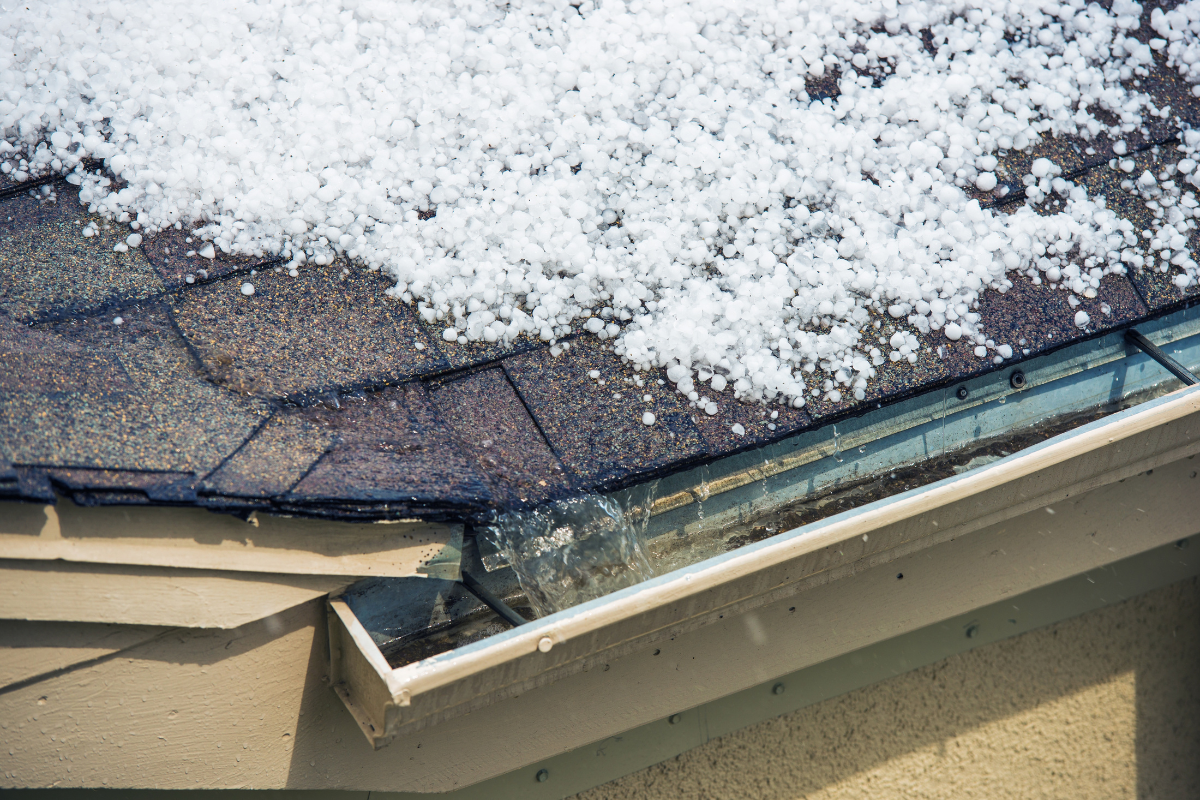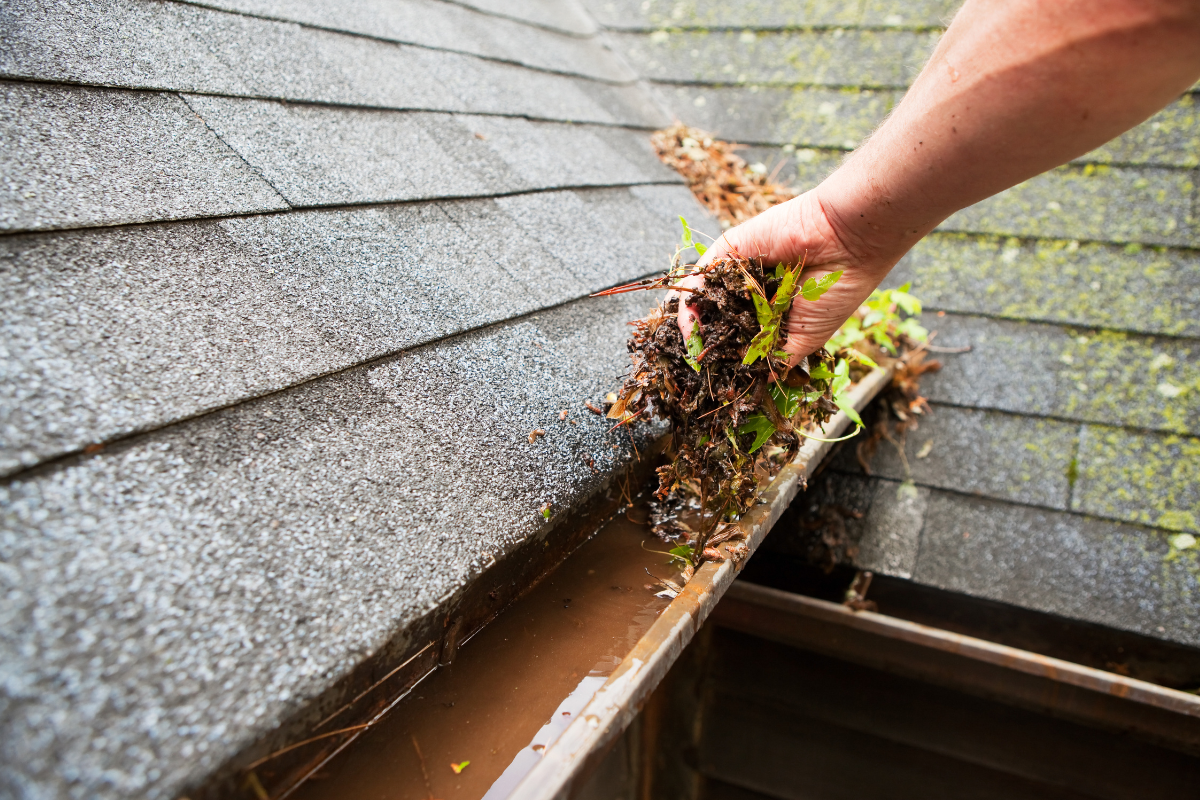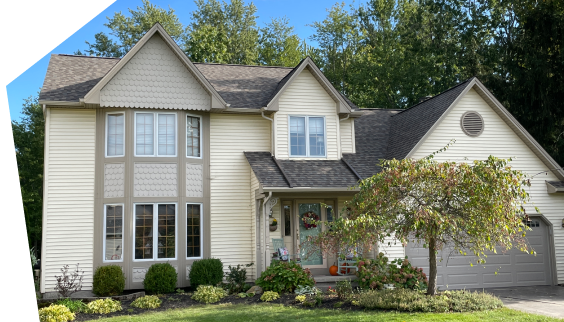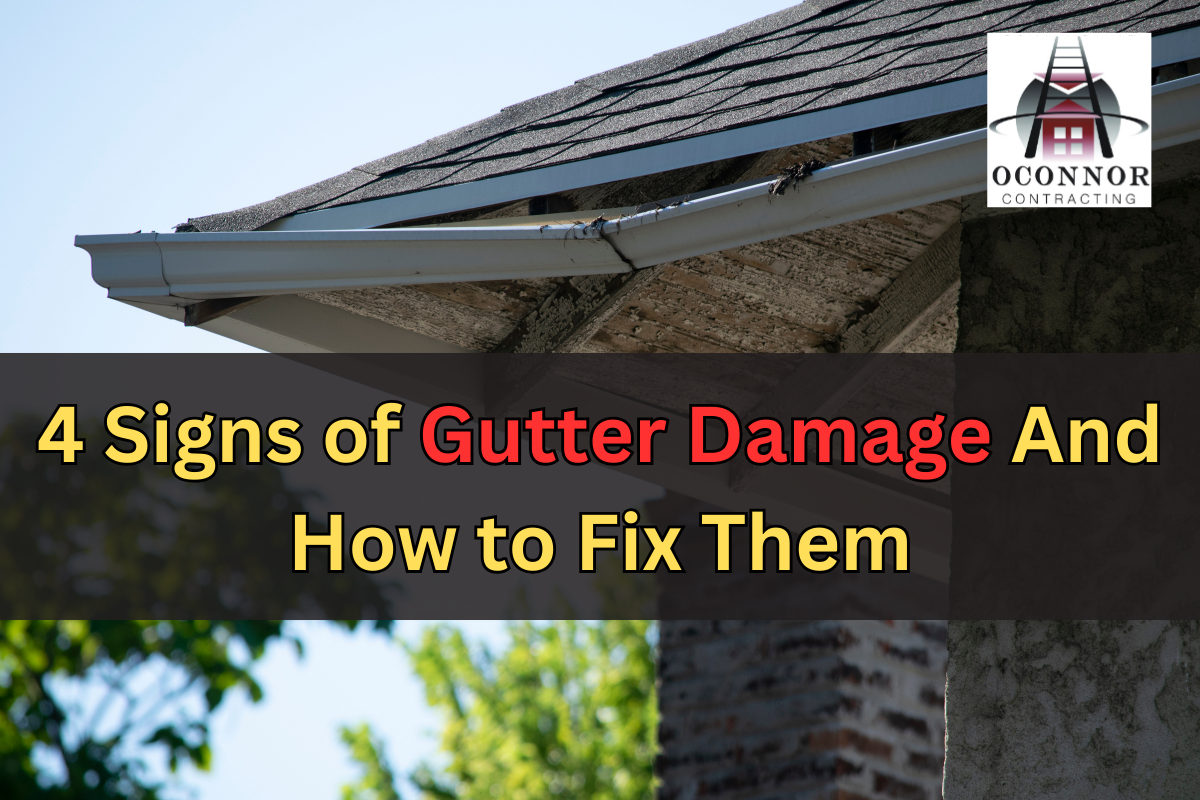Gutters are a component of your roof that you may not think about much, but they do an important task that the well-being of your home and its foundation depend on. These systems play a crucial role in protecting the property from potential water damage by preventing issues such as flooding, foundation damage, and erosion.
Though they don’t often need regular maintenance, it’s a good idea to keep an eye on your gutters, especially after severe weather. Unpredictable conditions such as hail or strong winds can harm gutter components, leading to leaks and water damage.
In this article, we’ll explore the importance of addressing gutter damage, common signs, causes, and potential consequences of ignoring these issues. We’ll break down the key aspects of gutter damage to help you better understand and tackle this often-overlooked issue.
How Gutter Damage Can Affect Your Property
Gutter damage can have an effect on various aspects of your home. From compromised structural integrity to aesthetic issues, the consequences of neglecting gutter issues can be far-reaching. Understanding these impacts is key to realizing the significance of timely gutter maintenance.
4 Signs Your Gutters Are Damaged
If you want to make sure that your home stays in good condition, it is important to spot gutter damage early. Here are a few gutter problems to look out for and how you can take care of them:
#1 Sagging Gutters
One of the most common issues you may face with your gutters is sagging. Not only the roof, but also your gutters are also susceptible to sagging over time.
Causes of Sagging or Warped Gutters:
Sagging or warped gutters are often caused by the accumulation of debris, such as leaves and twigs, which can weigh down the gutters over time. Additionally, the age of the gutters or excessive water during heavy rainfall can contribute to this issue.
Potential Consequences if Left Unaddressed:
If sagging or warped gutters are not addressed promptly, they can lead to improper water drainage, causing water to overflow and damage the property’s foundation. This may result in costly repairs and compromise the structural stability of the building.
How To Fix Sagging Gutters:
If your gutters are sagging or improperly aligned, you need to adjust the system. It’s essential to reposition and secure them properly. This may involve adjusting the slope to ensure water flows towards the downspouts. Tighten the screws and check on the condition of the hangers to make sure that the gutters are positioned correctly.

#2 Leaky Gutters:
The primary purpose of your gutter systems is to protect your home’s roof and foundation from excessive water damage. But they are not immune to damage and can give way to leaks around joints or fasteners.
Reasons Behind Leaking Gutters:
Leaking gutters can be caused by corrosion, rust, or damage to the gutter material. Poorly sealed joints or connections between gutter sections can also lead to leaks.
Potential Damages Caused by Leaking Gutters:
Leaking gutters can result in a ripple effect. When gutters are unable to pass the water through the downspouts, the water can seep into the walls, causing damage, rot, and mold growth. This can affect both the exterior and interior of the property, leading to aesthetic and structural issues.
How To Fix Gutter Leaks:
For leaking gutters, patch up any holes or cracks using waterproof sealants or specialized gutter repair products. If the damage is extensive, consider replacing the affected sections or installing new gutters altogether. Timely addressing of leaks is crucial to prevent further water damage to the structure.

#3 Clogged or Blocked Gutters:
As a homeowner, it is likely that you have faced this situation at least once. If you live in areas where there are frequent rain and wind storms, then this may be a more common occurrence.
Common Reasons for Gutter Clogs or Blockages:
Gutters often get clogged due to the accumulation of leaves, branches, and debris. This is particularly common during fall when leaves are shedding or when your home is surrounded by a lot of trees.
Negative Effects of Clogged or Blocked Gutters:
Clogged gutters prevent proper water flow, leading to overflow and potential water damage. Additionally, clogs contribute to the growth of algae and mold, further compromising the gutters’ functionality.
How To Fix Clogged Gutters:
Regular cleaning of gutters and downspouts is crucial for preventing clogs and maintaining proper water flow. Use a hose or a trowel to remove any debris, leaves, or dirt that may have accumulated in the gutters or the downspouts.

#4 Visibly Dented Gutters:
All the above issues that we discussed can be tackled with attention to detail and proactive repairs. However, if the gutters are severely damaged due to hail or wind, then it’s likely time to call for a complete replacement.
Causes of Broken or Dented Gutters:
Gutters can become broken or dented due to various reasons, such as impact from falling branches, heavy debris, or weather-related events. For example, a heavy wind or a snowstorm hitting your area.
Cost of Addressing Gutter Damage:
The cost of addressing gutter damage depends on the extent of the damage and the type of repairs needed. Prompt repairs are generally more cost-effective than dealing with extensive structural damage caused by neglected gutter issues.
Other Things You Can Do
Beyond identifying the specific issues and taking immediate actions like cleaning, realigning, or replacing damaged sections, a comprehensive approach to repairing and restoring damaged gutters involves several key steps.
Thorough Inspection:
Begin by conducting a thorough inspection of your entire roofing system. You can do it yourself, but it is advisable to hire a professional roofing contractor for the inspection.
Look for any visible signs of damage, including cracks, rust, loose fasteners, and sagging sections. Additionally, check for signs of water stains or mold on the exterior walls, as these can indicate underlying gutter issues.
Add Downspout Extensions:
Direct water away from the foundation by extending downspouts at least several feet away from the house. This helps prevent soil erosion, basement flooding, and foundation damage. Consider adding splash blocks or underground extensions to guide water even farther from the property.
Professional Assistance:
In cases of extensive damage or if you are unsure about the repairs, seeking assistance from a professional is advisable. Professional gutter repair services can provide expertise, identify underlying issues, and offer solutions tailored to your specific gutter system and property requirements.
Regular Maintenance Schedule:
Establish a routine maintenance schedule to inspect and clean gutters at least twice a year, ideally during spring and fall. Regular upkeep can identify potential problems early, preventing them from escalating into more significant issues that may require costly repairs.
Conclusion
Gutter damage should not be underestimated, as it can lead to severe consequences for your home. Regular inspection, maintenance, and timely repairs are essential to ensure that your gutters function properly and protect your home from water-related issues. By addressing gutter damage promptly, you can avoid costly repairs and maintain the long-term health of your property.
If you need help with gutter repairs or replacement, look no further than the team of OConnor Contracting. We are the best gutter installers in Western New York. We can install different types of gutter systems, be it traditional or seamless gutter systems. Contact us today at (716) 600-7663 to learn more.


